Minor League Baseball trumps the Big Leagues. Tickets are significantly cheaper, atmosphere is casual and parking is way easier. Plus the players are playing for heart, not purse. Although ballplayers on the farm teams may not have the talent or skills of the guys in The Show, the action—and therefore your chance for a great shot—is equal.
Here’s your guide to finding the teams near you, preparing for the event, and coming back with the most rewarding photos.
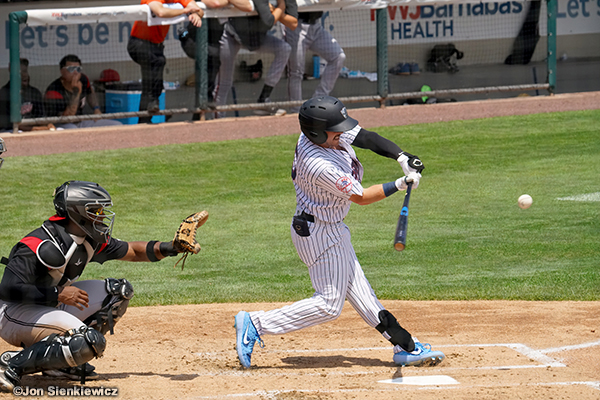
Find a Nearby Team
Start at the MiLB (Minor League Baseball) website. You’ll find an alphabetical list of all MiLB teams that are affiliated with Major League clubs at this ticket purchasing portal. Not listed are the many independent, non-affiliated leagues, so Google “minor league baseball near me” for a more comprehensive search. My favorite and most accessible team is the New Jersey Jackals in the Frontier League. It’s an independent league but it’s designated as one of the Partner Leagues of MLB.
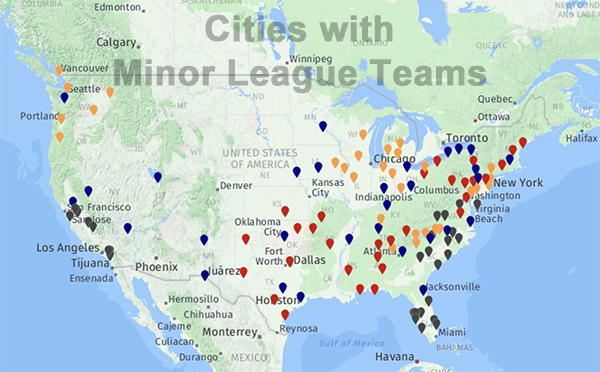
Do Some Homework
Visit your local team’s website. Is the team affiliated with a major league team? As the name “farm team” implies, the majority of minor league teams are partnered with major league teams and serve as incubators for new players. While it makes no difference as far as photography is concerned, affiliated teams generally have better players. There’s always the chance that the kid you photograph today will be in the Baseball Hall of Fame a couple decades from now.
Check the rosters. Many teams have players or coaches who are former major leaguers, and occasionally big-time talent who are temporarily sent to a farm team on a rehabilitative assignment while recovering from an injury. If you’re a baseball fan, it’s fun to catch shots of current and former stars.
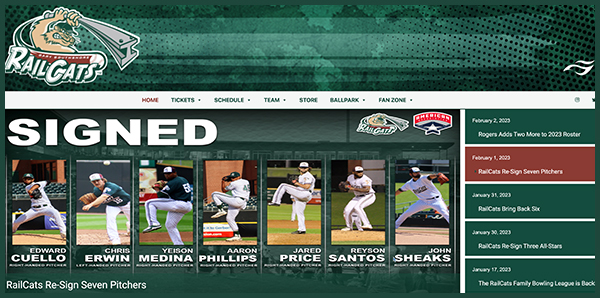
Review the schedule. The minor league baseball season is shorter and starts later, usually in mid-May. There are also Winter League teams that play during MLB’s off season. Obviously, these are located in the warmer parts of the US and in the Caribbean.
Ticket Prices & Promotions
The low, low cost of admission will astound you. Don’t be surprised to get in for less than 20 bucks, often much less.
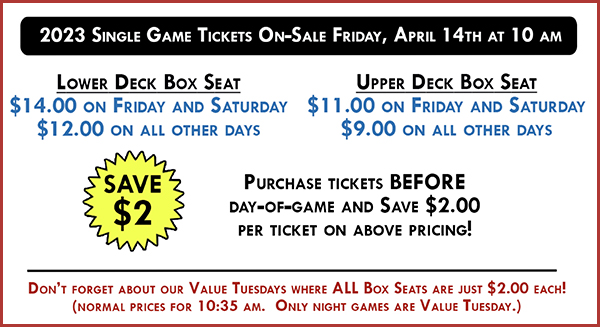
Weekend fireworks and $2 hot dogs are just a couple of the promotions offered multifariously across the leagues. Many teams have outstanding programs for youngsters, students, active duty military, first responders and community organizations. Look for ticket price specials, too, like the Value Tuesdays offered by the Windy City Thunderbolts: on Tuesdays, all night game box seats are $2.
What Equipment to Pack
I like to pack for maximum mobility, so I usually carry one DSLR or mirrorless, a long telephoto zoom and mid-range zoom. Zooms in the 70-200mm range work well, but I prefer a longer tele, something in the 100-400mm or 100-500mm range. Many of the photos in this article were shot with a Tamron 150-500mm F/5-6.7. In addition to outstanding performance, it has the added advantage of being only 8.3 inches long (11.1 inches long at the fully extended 500mm setting) and weighs only 3.8 pounds in Fujifilm X mount.
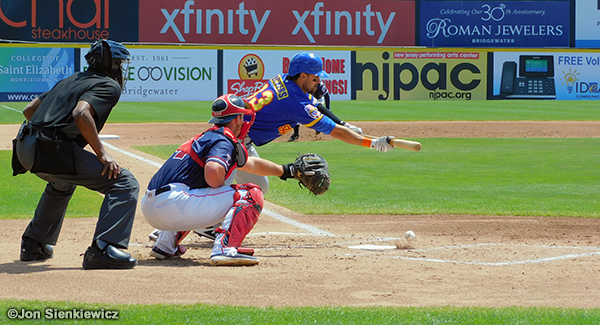
Sometimes I pack a second body and a wide angle prime or adapted prime tele like my favorite Nikon 200mm f/4 Nikkor-Q (which is older than you are if you were born after 1962) on my Nikon Df. Why a wide angle prime? Sometimes the best action happens in the stands.
You don’t need high priced gear to get good shots. All-in-one ultra-zoom cameras and super-zoom cameras (the now-discontinued Nikon COOLPIX B600 for instance) produce good results, too. In fact, the image somewhere on this page of a NY Boulders player attempting to bunt was shot with a B600. I’ve gotten equally good images from Sony and Fujifilm super-zoom bridge cameras, too.
I don’t carry a tripod often, although I do frequently use a 3LT monopod. Tripods make it more difficult to be mobile and navigate the crowds. Other photographers position tripods to keep one telephoto lens trained on an action area, second base for example. It works great for some, but not for me.
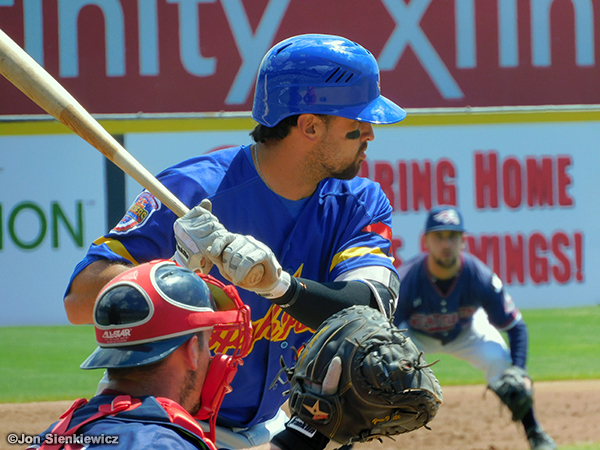
Gadget bag preferences are highly personal, but in keeping with my “travel light” approach, I prefer small to medium shoulder bags. For a rundown on bag shopping, please read How to Buy a Camera Bag. You cannot sit down while wearing a photo backpack, but they do provide plenty of cargo capacity and are comfortable if you have a long hike to the stadium from the parking lot. Modular belt rigs and nice for standing, but they too impede sitting. Overall, the time-proven Domke F2 original shoulder bag is an everyday, all-around great choice.
Location, Location, Location — Seriously
Buy the most expensive ticket available, and ask if you can move around between innings if there are empty seats. The most expensive ticket to an NJ Jackals game last year was $17 when purchased at the gate, so the entry fee is very reasonable (expect to pay more if you buy via a ticket agency).
Changing your location is important if you want to get a variety of shots. The three natural hot spots are a) behind the catcher, b) as close to first base or third base as you can get, and c) anywhere you can get a tight shot of the pitcher at an interesting angle. The more baseball you shoot, the sooner you’ll settle into a pattern of favorite locations.
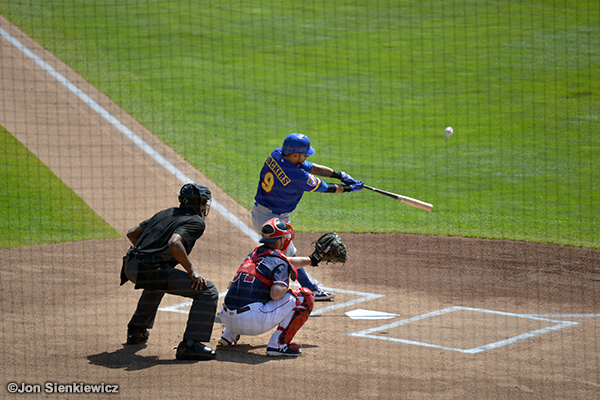
In recent years, stadiums have erected protective netting to prevent line drives from injuring fans. I applaud that, but it makes it very difficult to get great shots from some key areas. Nets and screens can also interfere with autofocus. Be aware of this beforehand and learn how to shoot through fences with minimum image distortion. In a nutshell, focus manually and use a large aperture to at least partially exclude the netting from the depth-of-field foreground.
Exposure Setting Guide
Use a shutter speed that’s fast enough to stop action, no lower than 1/1000 sec and shorter if possible. This means you need a high ISO if you want to combine a reasonably small aperture with a fast shutter speed. In bright daylight, high ISOs do not diminish image quality as much as when shooting in dimly lit situations.
There are exceptions to this general guideline, of course, depending on lighting conditions and the limitations of your equipment. That’s why it’s important to frequently review the images and check carefully for sharpness.
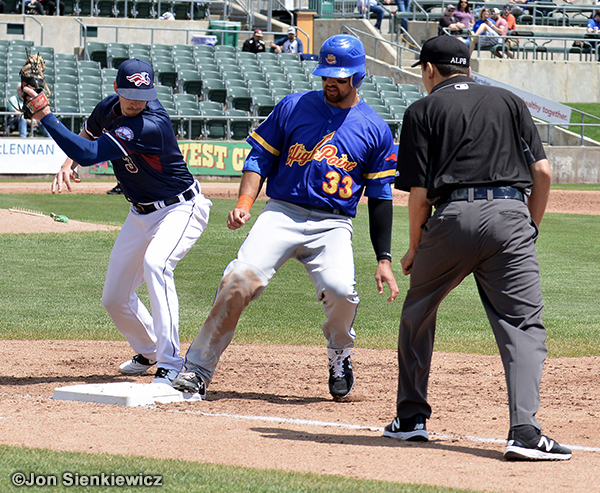
Game Dynamics
The assumption is that you know the basic rules of baseball and, more importantly, the flow of the game and natural chain of events. Your attention shifts from the pitcher to the batter when the ball is thrown, and likewise to a fielder when the ball is hit into play. If there are runners on base, anticipate what they potentially may do and aim your camera accordingly. Once there is a runner on first, concentrate on the action that might occur at second base. It takes patience, but there are no replays in live baseball. Be ready to shoot, or sit back and watch the game.
It’s virtually impossible to move your camera from spot to spot with every pitch, so shift your attention from the pitcher to the batter to the runners and so forth and hold that position for several shots.
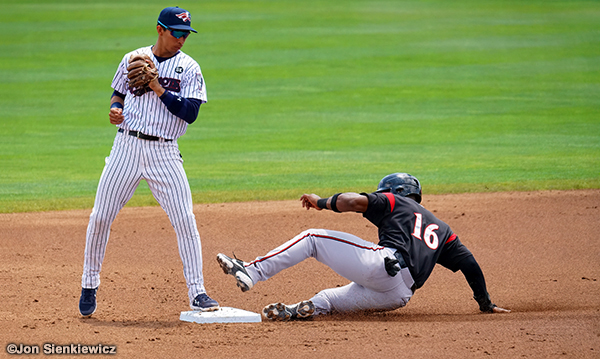
Timing and Tension
If your camera is capable of shooting high speed bursts, experiment with high frame rates. Shoot sequences. It’s ideal to have a series of images capturing a complete action—like the pitcher winding up and throwing, for example. And you’re much more likely to get a shot you like by capturing several of the same scene.
Alternatively, you can do what I do—shoot single shots instead of bursts and strive to capture peak action. It’s challenging but rewarding, and good training, too. By practicing your timing you improve overall as a photographer. For example, focus on the batter and try capturing the climax of his swing. To accomplish this, you must follow rule number one: keep both eyes open. I’m right-eye-dominant so my right orb is stuck in the viewfinder and my left eye is watching the action on the field. Sometimes the squareness of composition goes out of plumb, but I prefer that to using a tripod which invariably slows me down at the ballpark.
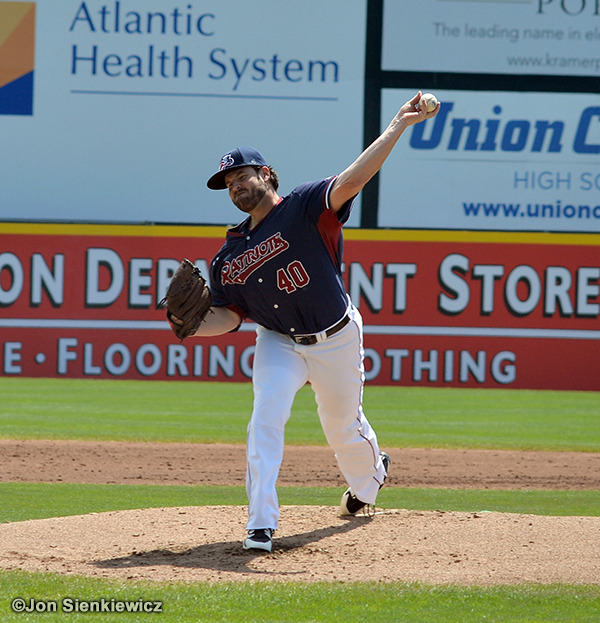
Try to capture tension in every shot. Not physiological tension, compositional tension. One example of tension is the scene of a runner leading off of first base. Is he going to run? If the pitcher tries to pick him off, can the runner dive back in time? The pitcher is deciding—pitch or throw to first to hold the runner close?
When a ball is hit into play, that’s pure tension. Will the ball be caught? Should the runners advance? Are the fielders moving into the right positions to back up a throw or catch a cut-off throw? I think that those who criticize baseball for being slow cannot recognize the ever-present tension.
Capturing compositional tension is vital for all forms of photography. Often it’s subtle and faint. During a baseball game, tension is everywhere at all times, with every pitch and every foul ball. Photographing a baseball game is like street photography in a box.
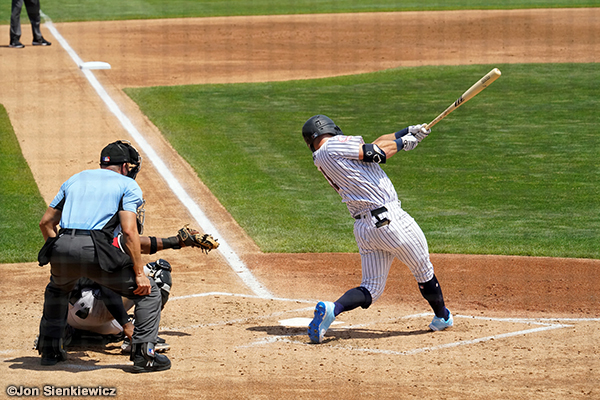
Conclusion
You can use the advice given here when shooting little league and high school/college baseball games, of course. Weekend softball games, too. I’ve never seen a live cricket match, but I would approach covering it in this same general way.
Much of what’s written here is applicable to shooting major league games, except of course the parts about changing your location in the stadium. And that’s the biggest reason why I greatly prefer minor league ball to major league.
—Jon Sienkiewicz
